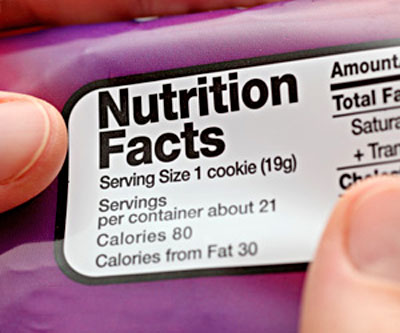Sodium nitrate and sodium nitrite
What: Food preservative; helps retain
red coloring in processed meat products (sodium
nitrate and
sodium nitrite).
Effects: Its chemical component contains carcinogens, and
when accumulated in the body, can lead to stomach, prostate, and
breast cancers. It has also been found to cause fetal deaths,
miscarriages, and birth defects among animals in the laboratory.
Option: Seek for nitrate or nitrite-free meat products.
Butylated
hydrozytoluene (BHT) and Butylated hydroxyanisole
(BHA)
What: Common among processed foods and
also in cereals, potato chips, vegetable oils, and chewing gums
(BHT
and
BHA).
Effects: Increases the risk of cancer development, liver
enlargement, and hampers cell growth.
Propyl
gallate
What: Found in stocked chicken soup,
gum, and in a few processed meat products.
Effect: Still being suspected as a carcinogen,
propyl gallate is found to
cause gastrointestinal, kidney, and liver problems.
Monosodium glutamate (MSG)
What: An artificial flavor enhancer,
MSG is found in canned soups,
chips, crackers, salad dressings, and frozen foods. It is also
disguised under label entries like "spices," "natural
flavoring," and "seasonings."
Effects: Found to cause dizziness and nausea.
Hydrogenated vegetable oil
What: Known as a trans fat, this can
be found in microwave popcorn, chips, pastries, cookies, pies,
cakes, lard, margarine, cottonseed oil, coconut oil, and palm
kernel oil (hydrogenated
vegetable oil).
Effects: Cardiovascular diseases like stroke, kidney
failure, and other heart diseases.
Options: Virgin olive oil and other monounsaturated fats.
Aspartame
What: An ingredient in gelatin, frozen
desserts, yogurt, puddings, diet sodas, low-calorie diets, and
children's vitamins (aspartame).
Effect: Can cause food poisoning and makes up the bulk of
consumer complaints directed to the FDA.
Options: Xylitol and Stevia which are natural sweeteners.
Acesulfame-K
What: Food sweetener and has been
recently approved by
the FDA as a food additive in
baked goods, diet soda, gelatin desserts, and chewing gums (acesulfame-K).
Option:
Xylitol and
Stevia as healthy sweeteners.
Food colorings 1, 2, 3, and 6
What: These are blue, red, green, and
yellow. Used in beverages, baked goods, and candies, cherries,
fruit cocktail, sausage, and gelatin (food
colorings).
Effects: Causes tumors in the different parts of the body
like the kidneys and adrenal glands.
Olestra or olean
What: Artificial fat preventing
healthy fat absorption in the digestive system and can be found
in potato chips (olestra).
Effects: Found to cause diarrhea, intestinal problems,
and other gastrointestinal problems.
Potassium bromate
What: Bleaching agent in white flour
and can be found in pizza dough, breads, and rolls (potassium
bromate).
Effect: Found to cause cancer in both animals and humans.
Option: Un-bromated flour products.

